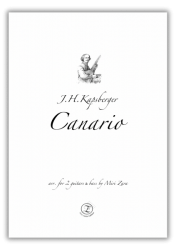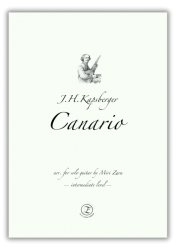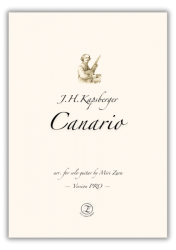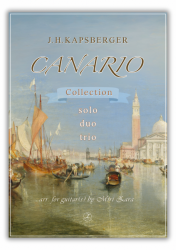
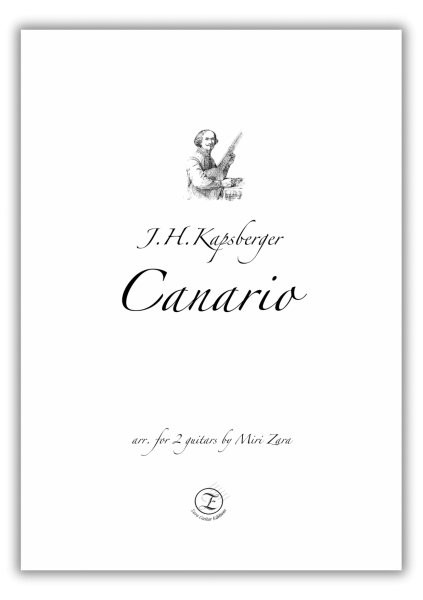
J.H.Kapsberger - Canario/2G
| Type of Music Notation: | Standard |
| Format: | |
| Number of pages or Backing tracks: | 12 |
Browse all pages in unique Flip-book preview with audio
Johann Hieronymus Kapsberger (c.1580-1651) - also: Giovanni Girolamo Kapsperger, the son of a German colonel, found fame mostly as a performer on and composer for, plucked instruments such as lute and chitarrone.
It seems he grew up in Venice, but shortly after the appearance of his first publication (Libro primo d’intavolatura di chitarone) in 1604 he moved to Rome, where he spent the rest of his life.
In Rome Johann founded his own musical academy, and worked regularly with the leading poets of the city (he published at least fourteen books of secular songs). He seems to have been good at self-promotion — he regularly described himself as “Nobile Alemano” on his title pages, and even used a kind of logo for his name above the pieces; he was also successful at getting the patronage of influential people such as the Barberini family.
"I present to you the wonderful dance called Canarios, which I fell in love with at first sight. It was written around 1640 originally for Theorba. An essential element to understand in the performance of Canarios is the hemiola rhythm. The meter frequently shifts between 3/4 and 6/8 meter. You can interpret some measures either way. If you don't play the changes of meter correctly, the piece will fall flat. Canarios usually follows a binary structure, divided into two clear sections, often repeated. This structural pattern allows for variations and improvisations within the dance."


.jpeg)



